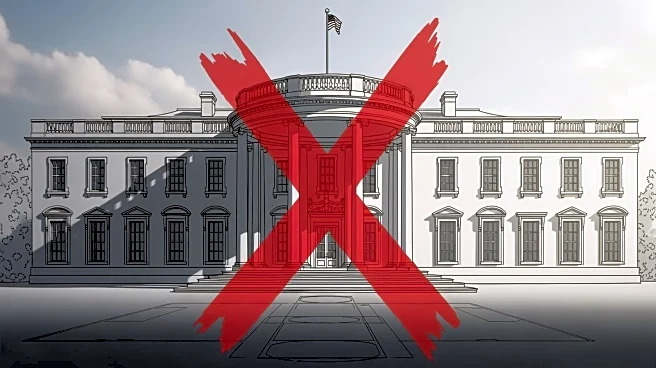What's Happening?
The White House East Wing is set to be demolished to make way for a new $300 million ballroom, as part of President Trump's plans. This development comes amid a government shutdown, with the demolition
expected to begin as soon as the upcoming weekend. The decision has been met with criticism from various quarters, including preservationists and political figures, who are concerned about the historical significance of the East Wing. President Trump has assured that the construction would not interfere with the East Wing, but the planned demolition has nonetheless raised alarms.
Why It's Important?
The demolition of the White House East Wing for a new ballroom under President Trump's administration has significant implications for historical preservation and public perception. The move has drawn criticism from preservationists and political figures who argue that it undermines the historical integrity of the White House. This decision could set a precedent for future alterations to national landmarks, potentially affecting how historical sites are preserved and maintained. Additionally, the timing of the demolition during a government shutdown may further polarize public opinion and impact President Trump's approval ratings.
What's Next?
As the demolition is set to proceed, it is likely that preservationist groups and political opponents will continue to voice their concerns and possibly seek legal avenues to halt or modify the plans. The outcome of these efforts could influence future policies on the preservation of national landmarks. Additionally, public reaction to the demolition and the construction of the ballroom may affect President Trump's political capital and influence ongoing debates about the administration's priorities.
Beyond the Headlines
The decision to demolish part of the White House for a ballroom raises questions about the balance between modernization and preservation of historical sites. It highlights the ongoing debate about how to maintain the cultural and historical significance of national landmarks while accommodating contemporary needs. This situation may prompt a broader discussion on the criteria and processes for making changes to historically significant buildings.














